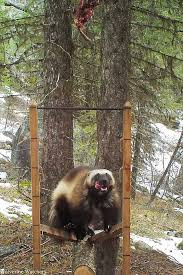Most folks who’ve enjoyed a dip in the local swimming hole – whether at a pond, lake, or river – have probably found, on occasion, a leech or two stuck to their skin while toweling off afterwards. Although some might think these slimy little suckers are gross, they mean – and do – no harm. They’re just hungry.
“With some 600 species, there’s a surprising amount of diversity,” said Adam Weaver, a biology professor at Vermont’s Saint Michael’s College. And the majority of leeches aren’t even bloodsuckers.
Weaver said scientists estimate about 10 percent of leech species – which are found from the tropics to desert watering holes to Antarctica – are parasitic, and only a couple of the 70 or so freshwater species found in North America are bloodsuckers. The rest get their nourishment primarily from eating larvae, invertebrates, and decaying matter.
That’s likely small comfort for the squeamish swimmer sporting a slimy worm. Chances are, though, if you’ve ever had a leech attached to your body, you likely didn’t even notice it until you saw it, because you never felt the bite.
“Leeches tend to have three to four rows of teeth that slice into the skin, making this very even slice,” said Weaver.
Their saliva also contains both anticoagulant and anesthetic agents, so not only will the meal source be unlikely to feel the leech bite, the blood will flow more freely into the leech. A meal typically lasts from half an hour to a few hours, during which time a leech will swell to several times its pre-meal size. Once satiated, a leech will simply remove itself from its host. It may not need another meal for several months.
Leeches of the bloodsucking variety don’t just like humans, of course; they’ll also feed on other mammals, as well as on fish and amphibians. They attach with both anterior and posterior suckers. The latter is mainly for adhesive purposes; the bloodsucking happens through the anterior sucker, which contains the leech’s teeth.
These segmented worms are sensitive to changes in movement and light, so a swimmer splashing through the water may attract a hungry leech’s attention. When they’re not hungry – or looking for a mate – leeches tend to stay hidden beneath rocks, logs, and other debris in the water. During winter, they survive by burrowing into mud below the frostline.
After emerging in the spring and consuming their first meal of the year, a leech’s next priority is mating. Although hermaphroditic, they reproduce sexually, with both leeches exchanging sperm. They deposit eggs in a cocoon, which they then typically attach to a rock or log underwater until the baby leeches emerge. The timing here depends on the species of leech.
One of the bloodsucking leech species common in our region is Macrobdella decora, also known as the North American medicinal leech, although the European species Hirudo medicinalis and Hirudo verbanahave been used more commonly for medicinal purposes.
While the medicinal use of leeches, which stretches back thousands of years, was often dubious, a modern version of the practice has been making a comeback in recent years.
“Leeches are most commonly used with tissues that are likely to go necrotic after time,” Weaver said – for example, on skin transplants or in reconstructive surgery. Basically, the leech’s combination of anticoagulants and suction helps restore healthy blood flow to the affected area: “It’s pulling fresh blood through the tissue that might die otherwise.”
While pharmaceutical anticoagulants tend to be strong and can cause bleed-outs in remote parts of the body, leeches, Weaver said, target the specific area that needs treatment.
All of this may seem irrelevant for the swimmer who jumps into the water for refreshment and comes up with a leech – or several – attached. If leeches make you squirm, just be glad to live here, where leeches typically measure only an inch or two and are confined to shallow water.
Some species in the tropics aggressively attack blood meals, Weaver said, and can travel “several lengths outside of the water.” And the giant Amazon leech, a bloodsucking species found in South America, can grow up to 18 inches long.
Here, leeches are harmless, if not always welcome by human bathers. They provide food for fish, turtles, and waterfowl and can serve as bait for fishermen. An attached leech can usually be removed easily by sliding a fingernail under its anterior mouthpart. And if you really want to avoid the little suckers, stick to deep water.
Meghan McCarthy McPhaul is an author and freelance writer.
 The highest density the United States has is in Alaska. Otherwise, they inhabit almost all of northern Canada as well as parts of Europe.
The highest density the United States has is in Alaska. Otherwise, they inhabit almost all of northern Canada as well as parts of Europe.
 The highest density the United States has is in Alaska. Otherwise, they inhabit almost all of northern Canada as well as parts of Europe.
The highest density the United States has is in Alaska. Otherwise, they inhabit almost all of northern Canada as well as parts of Europe.


























